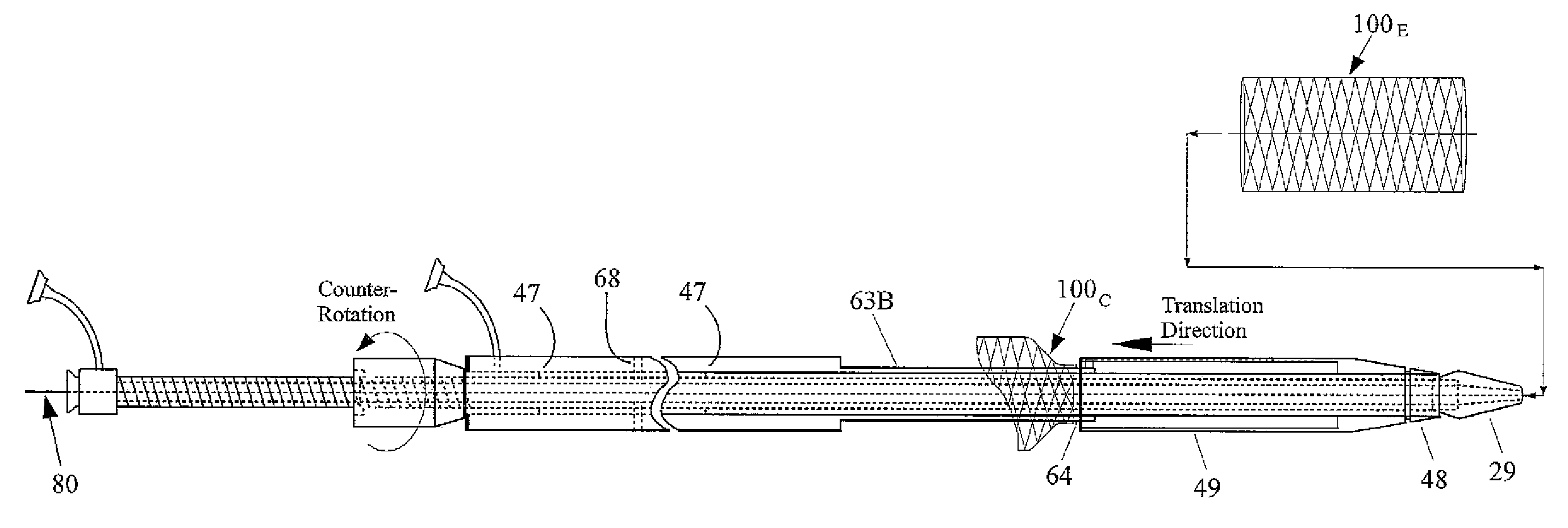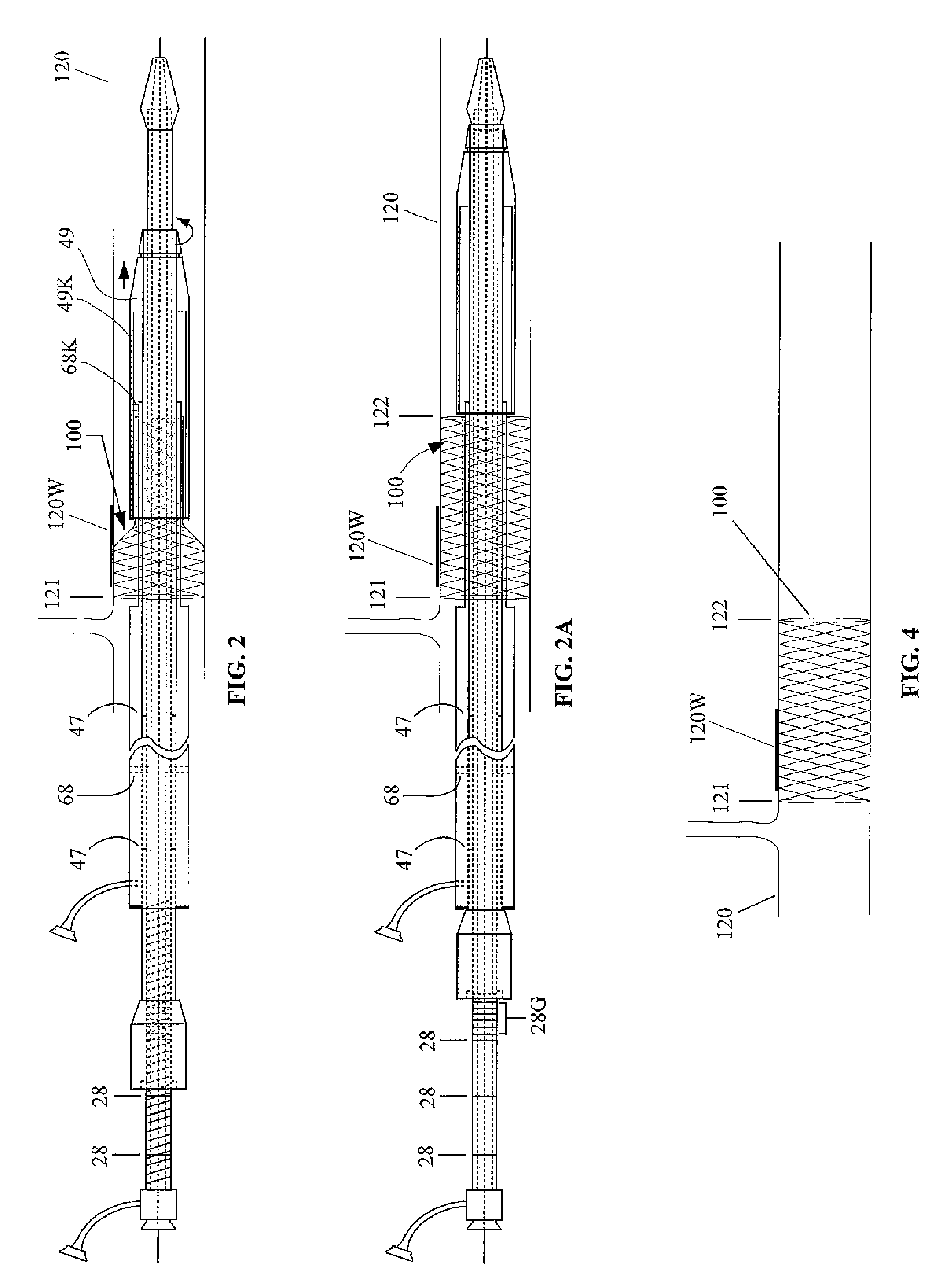Apparatus And Method for Proximal-to-Distal Endoluminal Stent Deployment
a technology applicator, which is applied in the field of applicator and method of distal to distal endoluminal stent deployment, can solve the problem of distal to distal stent installation
- Summary
- Abstract
- Description
- Claims
- Application Information
AI Technical Summary
Benefits of technology
Problems solved by technology
Method used
Image
Examples
Embodiment Construction
[0018]FIG. 1 shows a first embodiment of a prosthetic delivery device 10, being particularly adapted for introducing a stent within a lumen of a vessel, through a deployment procedure that is reversed with respect to conventional deployment, where deployment herein begins with the stent self-expanding at a desired proximal end location, and finishing at a distal end location. The main component parts of the prosthetic delivery device 10 comprise an inner guide tube assembly 20, a rotation tube assembly 40, and an outer tube assembly 60, each of which is shown individually within FIGS. 5, 6, and 7 respectfully.
[0019]The inner guide tube assembly 20 (FIG. 5) may have a first end 21 and a second end 22. The inner tube assembly 20 may comprise a flexible hollow tube 23 being of sufficient length to reach the sites that are typically the area targeted to receive a stent. A region 24 of the exterior of the inner tube 20, being proximate to the first end 21, may have external threading 25 ...
PUM
 Login to View More
Login to View More Abstract
Description
Claims
Application Information
 Login to View More
Login to View More - R&D
- Intellectual Property
- Life Sciences
- Materials
- Tech Scout
- Unparalleled Data Quality
- Higher Quality Content
- 60% Fewer Hallucinations
Browse by: Latest US Patents, China's latest patents, Technical Efficacy Thesaurus, Application Domain, Technology Topic, Popular Technical Reports.
© 2025 PatSnap. All rights reserved.Legal|Privacy policy|Modern Slavery Act Transparency Statement|Sitemap|About US| Contact US: help@patsnap.com



